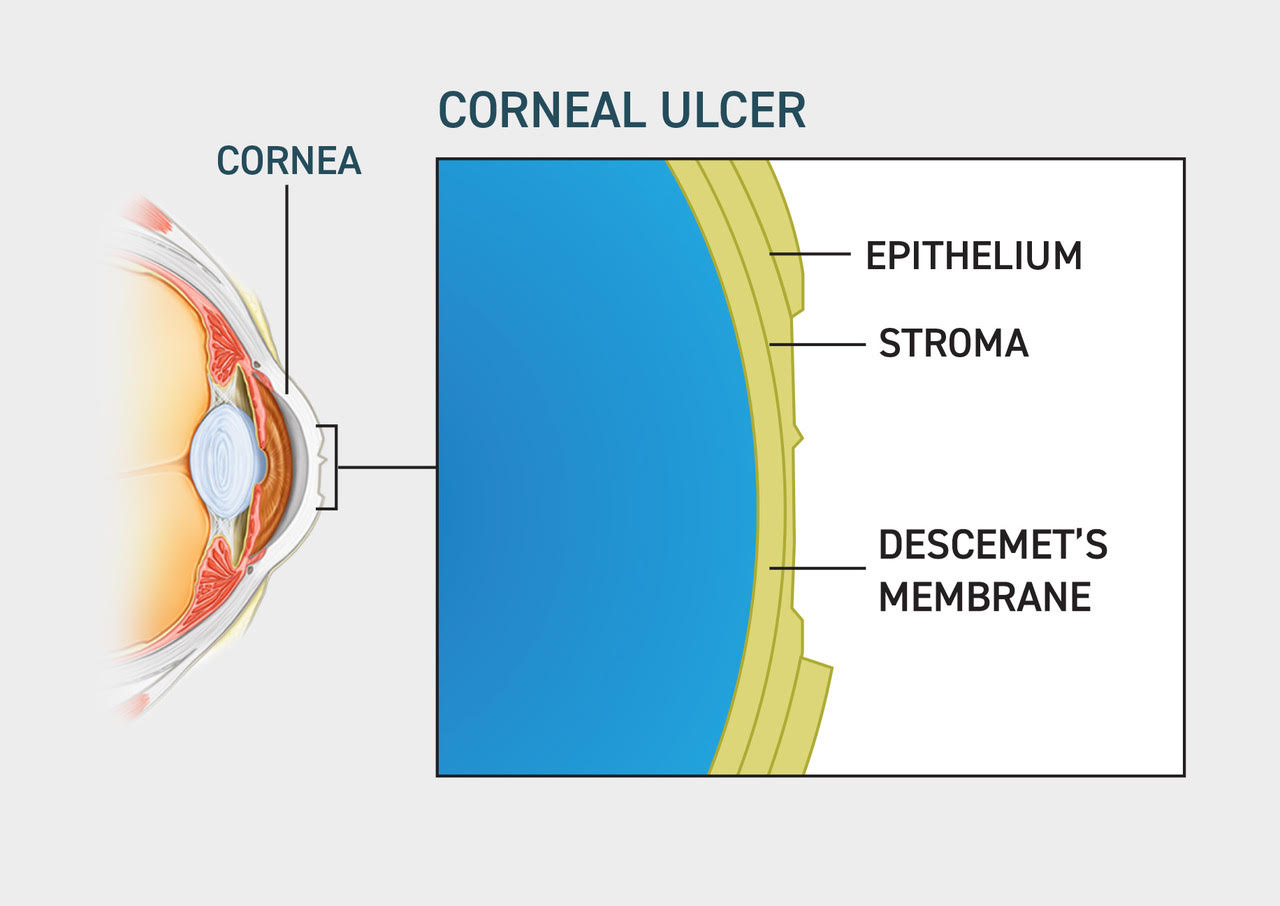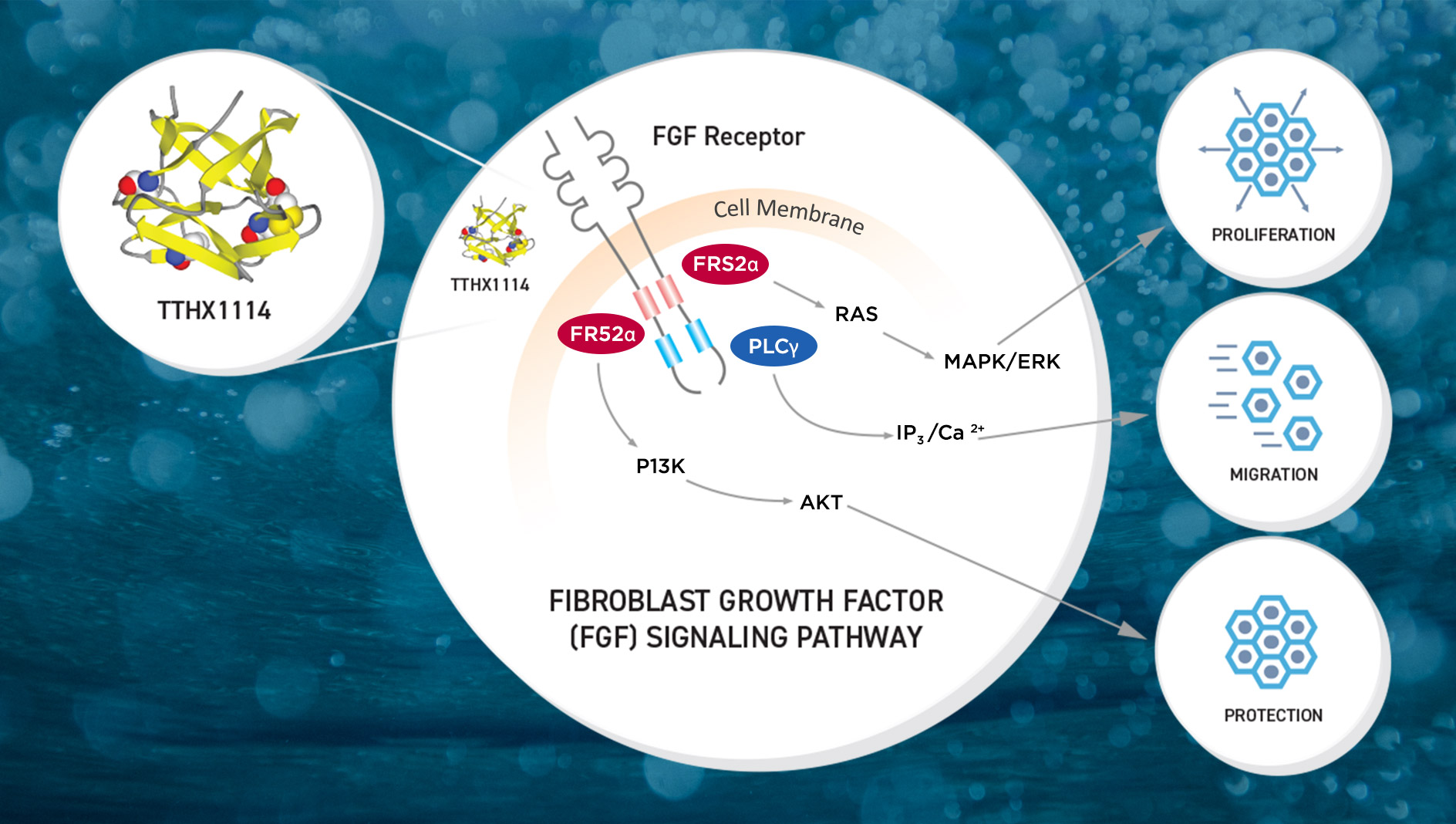
Healthy endothelial cells
(Fluorescence microscopy)

Cells with Fuchs’ dystrophy
(Fluorescence microscopy)
Endothelial Disease
The inner surface of the cornea is lined with endothelial cells, which play a critical role in maintaining a clear cornea. Although the number of endothelial cells slowly decreases with age, in a number of disorders, such as Fuchs endothelial cell dystrophy (FECD) the loss is accelerated. When the cells decline to a critical level, the consequence is clouding of the cornea, diminished vision and potential blindness in severe cases.
Patients who undergo intraocular surgery, such as cataract surgery or the implantation of glaucoma drainage devices, experience a loss of endothelial cells. Those patients with fewer endothelial cells before surgery may experience prolonged and persistent edema (swelling of the cornea) following intraocular surgery. This condition may result in a less than optimal surgical outcome and in some cases may require treatment by corneal transplantation.
Trefoil is developing TTHX1114, an intracameral injectable form of its engineered FGF1, as the first pharmaceutical treatment for the treatment of endothelial cell compromise associated with FECD or surgically induced endothelial damage.

Epithelial Conditions with
Associated Ulceration
Various diseases and conditions can affect the corneal epithelium, leading to vision impairment, ocular discomfort, and, in severe cases, blindness. Many of these conditions have secondary ocular manifestations that lead to damage to the epithelial surface. Treatments for the underlying conditions may not provide therapeutic benefit to the ocular surface.
Sjögren's syndrome is an autoimmune disorder that affects the ocular surface and the lacrimal glands, resulting in dry eye. Reduced tear production compromises the ocular surface and the corneal epithelium becomes vulnerable to damage, infection, and chronic inflammation, potentially causing corneal thinning, scarring, and vision loss.
Activation of herpes viruses, which cause oral and genital sores as well as chickenpox and shingles, can also affect the eye. Ocular herpes (herpetic keratopathy) can produce corneal ulcers that blur vision and induce intense pain and inflammation. There are no treatments specifically for these ulcers.
Neurotrophic keratitis is a degenerative corneal disease caused by impairment of corneal sensory innervation. The loss of corneal sensation leads to a reduction in tear production, blink reflex, and epithelial cell turnover, predisposing the cornea to breakdown, persistent epithelial defects, and, ultimately, ulceration and perforation.
Trefoil is developing a topical formulation of TTHX1114 to accelerate corneal ulcer wound healing by stimulating epithelial cell growth thereby reducing complications such as pain and inflammation. TTHX1114 also has the potential to treat other types of corneal damage, such as chemical or burn injuries and other types of ulcers.







